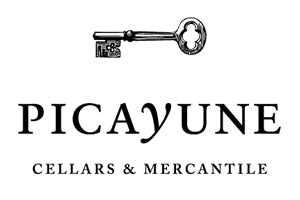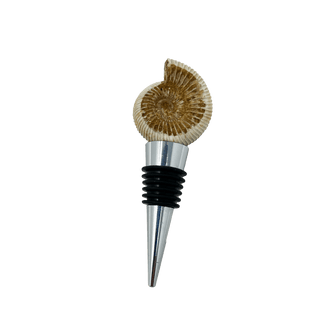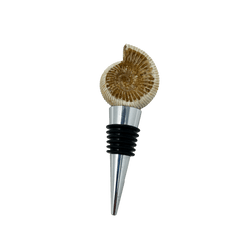Bottle stopper with original natural ammonite fossil. For a touch of natural beauty and a conversation piece, this is a perfect host gift for your next dinner party, or for the scientist in all of us. With a perfect golden ratio spiral, this fossil shows how nature and math and the universe connect.
Ammonite Fossil
Ammonites began appearing over 410 million years ago, during the Early Devonian period, vanishing soon after the Cretaceous mass extinction event 66 million years ago. They are most closely related to living octopuses, squid, and cuttlefish. The name "ammonite" was inspired by the spiral shape of their fossilized shells, which somewhat resemble tightly coiled rams' horns. The intricate, leaf-like veining on the exterior of the ammonite fossil is where the thin chamber walls interact with the outer shell. Living relatives have much smoother structures, making ammonites highly unique.
Bottle stopper with original natural ammonite fossil. For a touch of natural beauty and a conversation piece, this is a perfect host gift for your next dinner party, or for the scientist in all of us. With a perfect golden ratio spiral, this fossil shows how nature and math and the universe connect.
Ammonite Fossil
Ammonites began appearing over 410 million years ago, during the Early Devonian period, vanishing soon after the Cretaceous mass extinction event 66 million years ago. They are most closely related to living octopuses, squid, and cuttlefish. The name "ammonite" was inspired by the spiral shape of their fossilized shells, which somewhat resemble tightly coiled rams' horns. The intricate, leaf-like veining on the exterior of the ammonite fossil is where the thin chamber walls interact with the outer shell. Living relatives have much smoother structures, making ammonites highly unique.




